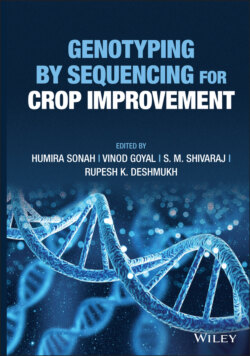Читать книгу Genotyping by Sequencing for Crop Improvement - Группа авторов - Страница 44
Invader Assay
ОглавлениеSeveral PCR‐free genotyping methods have been developed to date, one of such methods is invader assay (Lyamichev et al. 1999). Invader assay is based on nucleotide‐specific cleavage by a structure‐specific “flap” endonuclease, in the presence of an invading oligonucleotide. This reaction is followed by a subsequent secondary reaction that generates allele‐specific signals using fluorescence resonance energy transfer (FRET) oligonucleotide cassettes. Both of the reactions in invader assay are a “single vessel reaction” as well as isothermal reaction, hence are easily automatable. Although the whole process is highly accurate and automatable, the need of a large amount of DNA is one of its major drawbacks which can be omitted by coupling the reaction with PCR. Many other PCR‐free methodologies have been proposed like padlock probe ligation (Nilsson et al. 1994) the rolling circle DNA amplification (RCA) process (Baner et al. 1998). Although these gel‐free methods can be automated, and are highly accurate, their application is limited to only a small number of SNPs, hence genotyping of large numbers of SNPs covering the whole genome for genomic assisted breeding is very difficult.
Figure 2.2 A schematic representation of different SNP genotyping technologies.
The fluorescence‐based detection systems were further advanced and were designed in such a manner to detect change in polarization of fluorescence which is caused by the decreased mobility of a fluorophore due to an increase in molecular mass. During SNP genotyping with this method, the allele‐specific incorporation of fluorescently labeled ddNTPs can be detected as an increase in polarized fluorescence (Chen et al. 1999). As this amendment does not require fluorescently labeled primer and also a simple detection platform for genotyping is required, so the cost incurred is decreased. The addition of one extra step (PCR and post‐PCR processing steps) compared to single‐step methods makes it more complicated. Further, these fluorescence polarization‐based methods are usually unsuitable for high‐throughput genotyping because of the lack of multiplexing capability.
